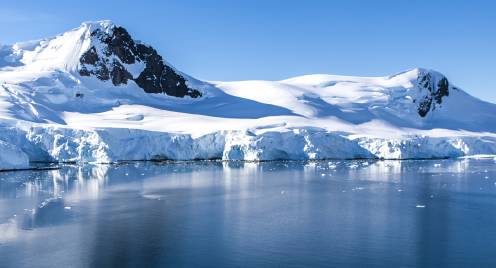As a nanoplanetary hydroclimatologist I sometimes look at mass balances of moisture across surfaces such as iron minerals or glaciers. Given what little else I know so far about moisture management within everyday heating and cooling control systems, the accounting of Moisture’s control of Temperature is supreme for any working system of climate control. Consider this post by another subject matter expert on hvac systems.
https://www.energyvanguard.com/blog/72820/Cold-Air-Is-Dry-Air
The relationship between Temperature and Humidity may seem like a chicken-or-egg conundrum, but the effective control of humidity by adding or removing moisture is key to achieving most goals in climate-controlled buildings. It’s also interesting to me that humidity control engineers typically simplify a room’s 3D air flow down to a 2 dimensional problem. That is similar to the geostrophic 2D simplifications I often use in examining global climate. And the simplifications appear to work well in both applications.
Moreover, geostrophic accounting for dry air and moist air flows is a germane practice at this hydrospheric focused site. It is also a standard practice in synoptic-scaled meteorological applications, including storm predictions for regions traversed by the Jet Stream, among other places. Accordingly the 2D geostrophic cases may be exactly poured into a standard HVAC equation and psychrometric table set, to develop expectations of heat and moisture patterns into the future.
I’m simply scanning those hvac engineering resources and hardly using any imagination to port over to Earth’s solar driven atmosphere and hydrosphere. The equations support a common understanding that it takes more energy to dehumidify an enclosed parcel (such as within a building) of warmer and moister air. This merits emphasis I think, because even emissions-believing scientists share a view that warmer ocean air is more moist than colder ocean air.
They do have a different view of the cause. My view is that solar energy made the ocean air as warm as it is. I also think that this has been the case for as long as there has been any ocean. Finally I think that the warmer the Sun shines, the more humid our air becomes. Their view is that ocean temperatures have been a mystery until the advent of man-made fossil fuels. Now any remaining air temperature anomalies can be attributed to ocean currents somehow capturing and hiding that heat deep within only to unleash it elsewhere. It’s all very complicated, and one would have to suspend the facts of thermodynamics as well as hydrodynamics, along with observations of vast ocean gyres, thermoclines and ocean pH, in order to grasp the beautiful intricacies. Many millions of people have successfully willed themselves to think this way.
In any case, all might still agree that if a warm room is cleared of moist air (dehumidified), and if that warm humid air is deposited into a colder air stream, there would be more icing in recipient locations. The same concept may easily be accepted for the Hadley globally circulated flows of moist air from the Earth’s equatorial trough towards the “outside” of the planetary boundary layer so to speak. The major receptacles for this newly frozen moisture include polar and mountain glacial repositories.
That seems to again support a notion that it would take a warmer Sun to produce great Ice Ages. It also seems to support the somewhat equally disturbing corollary that a colder Earth would experience greater sea level rise. This is only a blog, but basically the notion relates that a Sun which heats up, will “boil” more water from the oceans. Much of that water vapor will rise above the planetary boundary layer and condense to ice crystals. Some of that ice will precipitate over high altitude mountain catchments as snow. The hotter the Sun, the greater the boiling. The greater the boiling, the greater the concentration of atmospheric ice. The greater the amount of ice in the atmosphere circulating over the catchments, the greater the accumulation of snow there. The greater the snow accumulation, the bigger the glacier. The bigger the glacier, the lower the sea level.
Because of the growing avalanche of evidence, I’m adding some information of news to come:
- A paper by others on Andean glaciers, suggesting the climate was wet during the Little Ice Age.
- A renewed look at the flows of the Rio BioBio in Chile, and potential glacier papers to relate. I’ll do this because a paper of mine [1] already established a nice solar correlation to that river.
That’s relevant because of the other study. More ice comes from more moisture, and more moisture comes from more Solar radiation, for this Andean region which includes the watershed of the Rio BioBio.
[1] https://www.tandfonline.com/doi/abs/10.1080/02626667.2019.1567925?scroll=top&needAccess=true&journalCode=thsj20
 8593total visits,7visits today
8593total visits,7visits today
